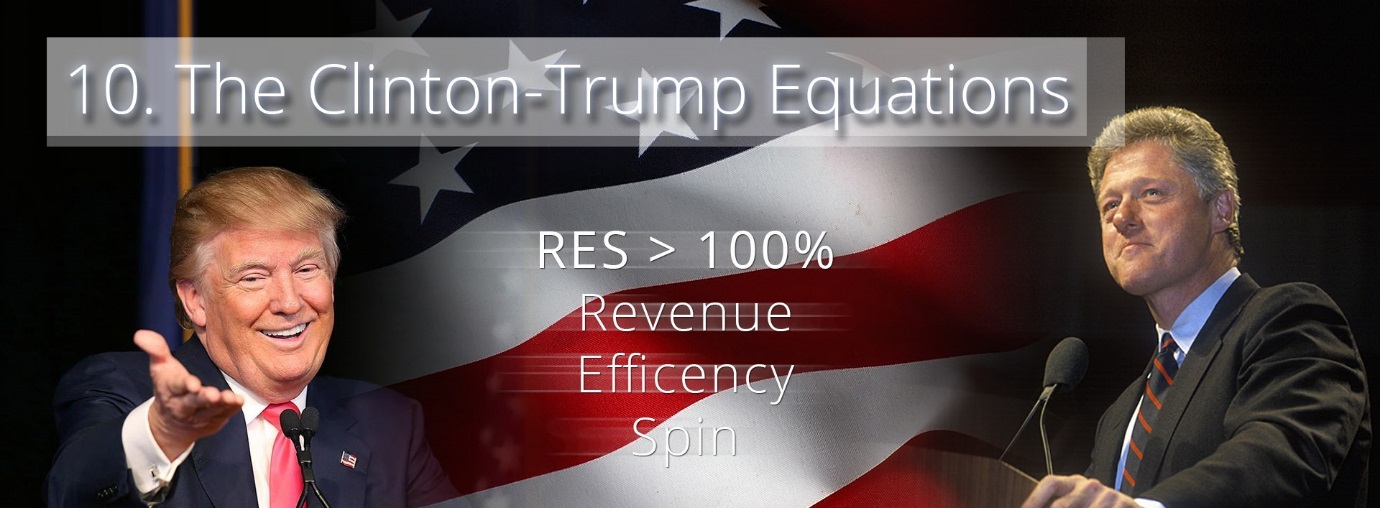The Clinton-Trump Equation (Super Summary)
System 10. The Clinton-Trump Equation (RES: Revenue x Efficiency x Spin)
Economic Black Holes / Quantum Economics / Business Efficiency / Tax / Economics
Brian Cox – Allegra Stratton – Ben Bernanke – James Gates – Amanda Peet – Leonard Susskind – President Bill Clinton – President Donald Trump

The Clinton Equation is the RES (Revenue x Efficacy x Spin) equation described in 2012 within American Butterfly part 3 ‘The Network on A String,’ Chapter 4. It was later dubbed ‘The Clinton Equation,’ in respect of President Clinton’s government creating a US federal budget surplus between 1998 to 2001.
RES (Revenue x Efficacy x Spin) first counts ‘R’ the initial revenue of a system. Then seeks to make the journey of that revenue through S-World as efficient as possible, avoiding economic black holes and keeping as much of the initial revenue as possible within the S-Wold network.
‘E’ is for Efficiency… a company’s profit, its suppliers profit, and profit made from the spending of salaries and bonuses & dividends (where bonuses & dividends are paid in network credits) by the company’s owners, management, and staff. The primary system we use to calculate ‘E’ is S-World UCS. Described in The Theory of Every Business, chapter 8 S-World UCS.
The ‘S’ in the RES equation is for ‘Spin,’ the amount of times money is spent and re-spent within a year. With a high efficiency, one can double an economic systems GDP by doubling spin. For instance, make a rule that the network credits will half in value each month, or setting the TFBMS to purchase/spend within ‘x’ days.
The Trump Equation was created after the first 2016 presidential debate, after President Trump suggested lowering company tax to 15%. Since New Sparta & The Theory of Every Business, S-World has thought a low or zero corporation tax in the USA would create ripple effects that would create greater tax receipts via sales tax, income, payroll and other taxes.
The Trump Equation is that a company’s taxes should be relative to the benefits the company has to the USA in tax, social, technical, ecological, and other categories. For instance, a company creates greater total tax relative to other companies should pay less in corporate tax.











Leave a Reply
Want to join the discussion?Feel free to contribute!